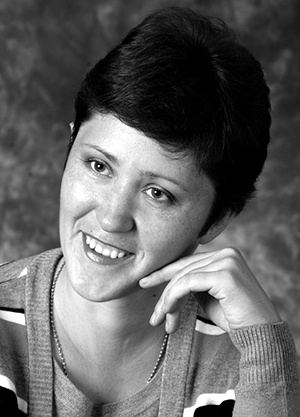Ribose in treatment of purine metabolism disorders in athletes
Фотографии:
ˑ:
Associate Professor, Ph.D. V.V. Kornyakova1
Professor, Dr.Med. V.D. Сonway2
V.A. Muratov1
Associate Professor, Dr.Biol. E.V. Fomina3
1Omsk State Medical University
2Omsk state agrarian university, Omsk
3State Research Center of the Institute of Biomedical Problems, Russian Academy of Sciences, Moscow
Keywords: athletes, erythrocytes, purines, antioxidative system, ribose.
Introduction. Intensive physical loads (IPL) in elite sport often result in fatigue thereby decreasing both physical performance and the training process efficiency in general [3, 4]. We have shown that growing fatigue is connected with purine metabolism disorders and accompanying activation of lipid peroxidation (LPO) processes and distressed activity of the antioxidant system (AOS) [2]. The search and reasoning of using means correcting those negative metabolic shifts are topical today.
The purpose of this research was to study effects of ribose on purine metabolism, the state of AOS and LPO processes in swimmers showing signs of fatigue.
Methods and organization of the research. The sample consisted of 20 elite male swimmers aged 17 to 20 years. They were tested during the training period that featured IPL. The first group of the research subjects consisted of athletes who had signs of fatigue in their medical records, physiological and biochemical test results (S1). Those athletes have been taking ribose (manufactured by SciFit, the USA) orally, the dose being 0.03 g per kg of their body weight, before and after highly intensive exercises for seven days; then they were tested again (S1+R). The control group consisted of 30 persons of the same age and sex who did not practice sports. During the tests, the requirements of the Helsinki Declaration “Ethical Principles for Medical Research Involving Human Subjects” were followed.
Athletes had their blood tested 5-10 minutes after a training session. In the blood of the tested subjects, we defined lactate, urate and glucose concentrations. In their RBCs, we studied activity of glutathione peroxidase (GPx), glutathione reductase (GR), glucose-6-phosphate dehydrogenase (G6PD), malondialdehyde (MDA) and glutathione content using methods described in the thesis [1]. The results of the research were statistically processed using the Student’s t-test and distribution-free methods of calculus.
Results and discussion. It was found that athletes in group S1 had increased lactate and urate levels vs. the control group’s, by 173% (P<0.0001) and 41.2% (P<0.0001) respectively, while glucose concentration was down 27.4% (P=0.001). Higher urate indicates purine catabolism and therefore activation of the xanthine oxidase reaction. Active oxygen metabolites generated in the latter damage RBC membrane structures, which is suggested by a 29.2% (P=0.042) increase of the MDA content in RBCs. RBCs in athletes of group S1 had a 12.4% lower GPx activity vs. the control group’s (P=0.044). That is due to lower glutathione content [minus 18.5% (P=0.033)]. G6PD activity is 28.3% (P=0.029) lower vs. the control group’s. Amid carbohydrate deficiency, that contributed to slower NADP2 generation, which is required for GR functioning: its activity is 18.3% lower (P=0.024).
In athletes of group S1+R the lactate concentration was 26.1% lower when in group S1 (P=0.03). Apparently, it is more actively involved in gluconeogenesis reactions in the liver and transforms into glucose the concentration of which grows by 29.6% (P=0.004). That facilitates more effective functioning of the pentose cycle: G6PD activity is 40.6% higher (P=0.028). Generating the required quantity of NADP2 facilitates increasing activity of GR in group S1+R athletes [by 20.7% (P=0.023)]. Ribose delivering reduces purine catabolism to urate, its concentration shrinks to 29.4% (P<0.0001). RBCs of athletes in group S1+R have a 21.8% (P=0.034) lower MDA content, which indicates of membrane structure integrity. Generated lipid hydroperoxides are effectively neutralized due to increased GPx activity [by 18.8% (P=0.033)]. That is facilitated by glutathione content replenishment [plus 10.9% (P=0.030)]. None of parameters characterizing AOS and LPO state in RBCs of athletes in group S1+R show statistically significant differences from similar values in the control group subjects.
Conclusion. Therefore, the intake of ribose by swimmers who experience IPL results in less intensive purine catabolism, slower LPO processes in the RBC membrane structures and higher efficiency of their AOS.
References
- Kornyakova, V.V., Сonway, V.D., Fomina, E.V. Antioksidantny status krovi pri fizicheskikh nagruzkakh i ego korrektsiya (Blood antioxidant status during exercise and its correction) Fundamental'nye issledovaniya (Fundamental research), 2012, no.1, pp. 47-51.
- Kornyakova, V.V., Сonway, V.D. Ostroe narushenie metabolizma purinov kak puskovoy mekhanizm razvitiya utomleniya u sportsmenov plovtsov (Acute purine metabolism disorder as a cause of development of fatigue in swimmers) Sovremennye problemy nauki i obrazovaniya (Modern problems of science and education), 2015, No. 3, available at: www.science-education.ru/123-19745/
- Rozhentsov, V.V., Polevshchikov, M.M. Utomlenie pri zanyatiyakh fizicheskoy kul'turoy i sportom: problemy, metody issledovaniya (Fatigue during physical training and sports: problems, research methods). Moscow, Sovetskiy Sport, 2006. 280 p.
Corresponding author: bbk_2007@inbox.ru


